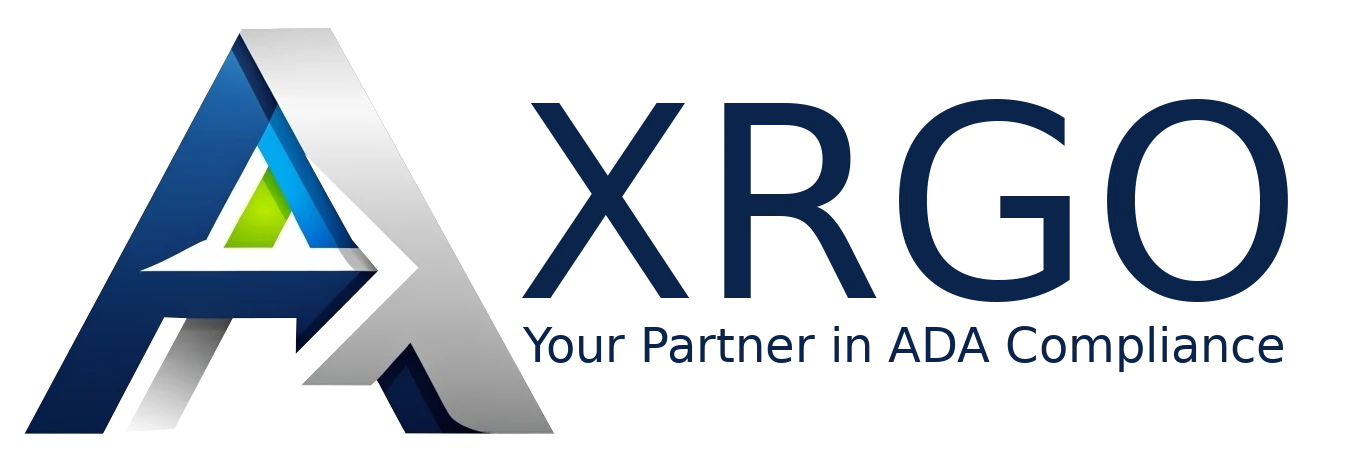Table of Contents
- The Power of Small Tactical Wins: How Speed, UX, ADA, and SEO Compound into Big Victories for Dealerships
- Why Tactical Wins Beat Big Overhauls
- The Four Core Areas Where Tactical Wins Deliver Massive ROI
- 1. Speed: The Unsung Revenue Multiplier
- 2. UX: Turning Clicks into Conversions
- 3. ADA Compliance: A Competitive Edge Hidden in Plain Sight
- 4. SEO: Small Optimizations, Big Visibility Gains
- The Compounding Effect of Weekly Wins
- How to Operationalize Tactical Wins
- Key Move: Launch Weekly “Small Win” Updates Instead of Quarterly Overhauls
Learn how U.S. car dealerships can use small, tactical wins in speed, UX, ADA compliance, and SEO to dominate online. Discover why weekly improvements beat massive overhauls and how compounding gains turn websites into conversion engines.
The Power of Small Tactical Wins: How Speed, UX, ADA, and SEO Compound into Big Victories for Dealerships
Why Incremental Improvements Beat Massive Overhauls in the Digital Battlefield
In the world of automotive retail, most dealerships think in terms of big swings: launching an entirely new website, rebranding their store, or rolling out an expensive ad campaign. These are high-cost, high-disruption moves that often take months to implement and even longer to deliver results.
But here’s the truth: you don’t need to rebuild your entire marketing machine to start winning online. In fact, the biggest advantages often come from small, tactical wins improvements that seem minor individually but, when stacked over time, compound into a dominant digital presence.
This is the dealership equivalent of precision strikes in warfare: fast, silent, effective.
Why Tactical Wins Beat Big Overhauls
Think of your dealership website as a living organism. It doesn’t need to be replaced every year; it needs to be optimized continuously. Big redesigns often introduce new problems broken links, shifting SEO structures, lost rankings, and delayed ROI.
Small wins, on the other hand, can be deployed quickly. They don’t require massive committees or OEM approval cycles. A dealer with a small but focused digital team can push improvements weekly and outpace competitors who only make changes quarterly or annually.
Small wins are:
- Faster to implement (days, not months).
- Lower risk (less chance of breaking something major).
- Easier to measure (you can isolate impact).
- Compounding over time (each improvement builds on the last).
The Four Core Areas Where Tactical Wins Deliver Massive ROI
While there are countless micro-optimizations you can make, four areas stand above the rest for U.S. dealerships:
- Website Speed
- User Experience (UX)
- ADA Compliance
- Search Engine Optimization (SEO)
Each area represents a strategic lever that, when pulled consistently, gives you an edge your competitors won’t see coming.
1. Speed: The Unsung Revenue Multiplier
Speed is one of the most overlooked competitive advantages in automotive retail. A half-second improvement in page load time can mean 10% more conversions. Why? Because modern car buyers are impatient. They’re browsing on mobile. They expect sites to load as fast as Amazon.
Google’s Core Web Vitals now factor heavily into search rankings, meaning that speed affects not just user experience, but visibility.
Imagine two dealerships:
- Dealer A’s site loads in 4.5 seconds.
- Dealer B’s site loads in 1.0 second.
Dealer B is rewarded by Google with better rankings. Users spend more time on the site. Bounce rates drop. Lead forms get filled. Dealer A might be spending more on ads, but Dealer B quietly wins the organic war.
Small Tactical Wins for Speed:
- Optimize and compress images without losing quality.
- Minimize or defer non-essential JavaScript.
- Use Django caching with Cloudflare CDN to deliver pages from edge servers.
- Preload critical assets like fonts and hero images.
- Regularly audit your Core Web Vitals.
Each of these steps can shave milliseconds or even seconds off your load time. Over a year, the impact compounds into thousands of extra leads.
2. UX: Turning Clicks into Conversions
A fast site gets the user in the door. Good UX gets them to take action.
Dealership websites often fall into two traps:
- Overloaded with pop-ups, sliders, and clutter that confuse users.
- Generic templates that do nothing to differentiate the experience.
UX improvements don’t have to mean a full redesign. They can be as simple as:
- Making CTAs larger and more visible on mobile.
- Reducing form fields to increase lead submissions.
- Improving menu navigation so users find inventory faster.
- Ensuring consistent typography, padding, and spacing.
- Using trust signals like reviews, secure badges, and transparent pricing.
Think of UX as persuasion through design. If someone lands on your site, they’re already interested. Good UX removes friction. Bad UX adds it.
Small Tactical Wins for UX:
- Run heatmaps to see where users drop off.
- A/B test different lead form placements.
- Simplify navigation menus.
- Make “Schedule a Test Drive” and “Check Availability” buttons prominent and persistent.
- Ensure mobile tap targets are large enough to prevent frustration.
A single UX change like making your CTA sticky on mobile, can increase lead submissions by 20–30%. That’s not theory; that’s real, measurable performance.
3. ADA Compliance: A Competitive Edge Hidden in Plain Sight
Most dealerships treat ADA compliance as a legal checkbox — if they think about it at all. But accessibility is a business opportunity. Roughly 25% of U.S. adults live with a disability. That’s tens of millions of potential customers who are often underserved online.
By fixing accessibility issues, you’re not only protecting yourself from lawsuits — which are increasingly common against dealership websites — but also unlocking a larger customer base.
Small Tactical Wins for ADA Compliance:
- Add proper alt text to all images.
- Ensure color contrast meets WCAG standards.
- Make all interactive elements keyboard-navigable.
- Use ARIA labels for screen readers.
- Offer voice search capabilities for users with mobility limitations.
Once you make these changes, you can actually market your accessibility. Add messaging like “Everyone can shop here, fully accessible experience” to differentiate yourself from competitors who ignore this audience entirely.
4. SEO: Small Optimizations, Big Visibility Gains
Many dealerships either ignore SEO or approach it in outdated ways — stuffing keywords into footers or relying solely on OEM-provided copy. But SEO rewards consistency and detail. You don’t need a massive content team to start winning.
Small Tactical Wins for SEO:
- Add local business schema markup to improve “near me” rankings.
- Optimize title tags and meta descriptions for every inventory page.
- Create internal linking structures to help Google crawl your site more effectively.
- Rewrite generic OEM descriptions with localized, unique content.
- Publish weekly blog posts targeting specific zip codes, neighborhoods, or buyer questions.
For example, simply adding local schema markup to your site can help you appear in Google’s local pack results — the highly visible map listings that dominate mobile searches. Optimizing your title tags can improve organic click-through rates by 15% or more.
These aren’t glamorous changes. They don’t require an entire marketing department. But they’re repeatable, measurable, and scalable — and they add up fast.
The Compounding Effect of Weekly Wins
One speed improvement might increase conversions by 10%.
One UX change might boost leads by 20%.
One SEO tweak might increase organic traffic by 15%.
One ADA fix might expand your addressable audience by 25%.
Individually, these look like modest gains. But when layered week after week, they compound.
Imagine making one small tactical improvement every week. In a year, that’s 52 incremental upgrades. Competitors who only update their site quarterly are standing still while you’re quietly building a digital performance machine.
How to Operationalize Tactical Wins
To make small wins part of your dealership’s culture, treat them like standing orders, not one-off projects.
- Set a Weekly Improvement Goal
Each week, choose one area to improve — speed, UX, ADA, or SEO. Keep it small, measurable, and deployable within days. - Assign Ownership
Have a small, empowered team or individual responsible for identifying, implementing, and measuring each win. - Measure and Log Results
Use analytics tools to track impact. Over time, build a “win log” that shows cumulative performance gains. - Avoid the Big Bang Temptation
Resist the urge to do massive redesigns that reset your progress. Instead, iterate continuously. - Celebrate Progress
Highlight each small improvement in team meetings. When people see the numbers move, momentum builds.
Key Move: Launch Weekly “Small Win” Updates Instead of Quarterly Overhauls
The dealerships that will dominate the next decade aren’t the ones with the flashiest ads or biggest lots. They’re the ones that move fast, iterate constantly, and stack small wins until they’re miles ahead of competitors who only make changes once or twice a year.
In warfare, precision strikes are more efficient than carpet bombing. In digital marketing, tactical wins outperform big overhauls.
Winning online doesn’t always require massive investments or radical overhauls. It requires focus, discipline, and consistency. By targeting speed, UX, ADA compliance, and SEO with small, tactical wins every week, your dealership can quietly build a digital advantage that compounds into market dominance.
The dealerships that adopt this mindset will control the digital battlefield. The ones that don’t will keep chasing expensive campaigns, wondering why their leads keep slipping away.
Frequently Asked Questions
They are quick, focused improvements to your website’s speed, UX, ADA compliance, or SEO that can be implemented weekly and measured for impact.
Small wins are faster, lower risk, easier to measure, and compound over time. Redesigns are slow, expensive, and often disrupt SEO performance.
Even a half-second improvement can increase conversions by 10% or more, especially for mobile users who expect near-instant load times.
It improves accessibility for up to 25% of U.S. adults, reduces legal risk, and can give your dealership a competitive advantage by serving underserved audiences.
Ideally, you should launch one tactical improvement per week, building consistent momentum over time.



Comments
Log in to add a comment.